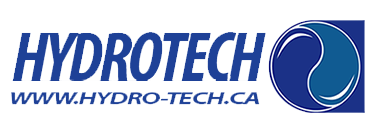What Paint Should Be Used for a Refinery?
Production facilities responsible for refining and converting raw materials into valuable products have highly-specialized needs for painting and coating. Refining often uses extreme heat, chemicals and pressure, all of which are liable to destroy or corrode structures and surfaces of your valuable equipment. On top of that, refineries often must deal with inclement weather including high levels of moisture, strong winds and exposure to the sun’s rays.
That’s why there are numerous benefits of refinery painting. Doing so can protect your equipment so that your business keeps operating smoothly.
Basics of refinery painting
Refineries are often referred to as facilities that convert crude oil; however, there are many other types of refineries beyond oil refineries including:
- Cooking oil
- Natural gas processing
- Sugar refineries for syrups and crystallized sugars
- Metal refineries for products like gold, silver, zinc and copper
- Salt refineries for commercial and consumer products
- Iron refineries for converting pig iron into steel or bar iron
Each aspect of a refinery may need to be covered with industrial coatings including elements such as:
- Boilers
- Distillation columns
- Pipe linings
- Steam lines
- Pressure valves
- Primary and secondary containment systems
- Heat exchangers
The refinery painting process
One of the most popular techniques for painting a refinery is spraying. This is because it yields excellent results in the shortest time possible. That said, you want to consult with experts before embarking on a refinery painting project.
Once you’re ready to go, the first step is preparing the surface to be painted by cleaning it thoroughly and removing any dust, debris, oil deposits or old paint. This can be done in a variety of ways including scrubbing with a wire brush or sandpaper. Using denatured alcohol in cleaning is a smart idea to ensure there are no oil remains on the tank’s surface.
Then it’s time to cover the parts of the refinery you don’t want painted. You can do so with masking tape. Wear rubber gloves while completing this work to prevent inadvertently contaminating the prepared surfaces.
When to paint your refinery depends on many factors including workflow and the weather. Just remember that when you do so, you should use several coats of paint that are uniformly applied over the surface of all components. There are a range of paints suited to specific industrial applications including epoxy, urethane and acrylic. Once this paint is applied, then allow it to dry.
Benefits of refinery painting
The most essential benefit of using industrial coating is that your equipment will be protected and will last longer. Other advantages include:
- Additional availability
- Faster production speed
- Better aesthetics
- Stronger compliance with safety regulations
- Easier facility maintenance and cleaning
- Protection of valuable capital assets
Whenever you need industrial painting services or want to know when to paint your refinery, the team at Hydro Tech is here to help. We provide industrial painting in an affordable, timely and safe manner. Our goal is to deliver an excellent product with minimal disruption to your business. Contact us right now for more information and get a free estimate.
Categorised in: Industrial Painting
This post was written by Writer

